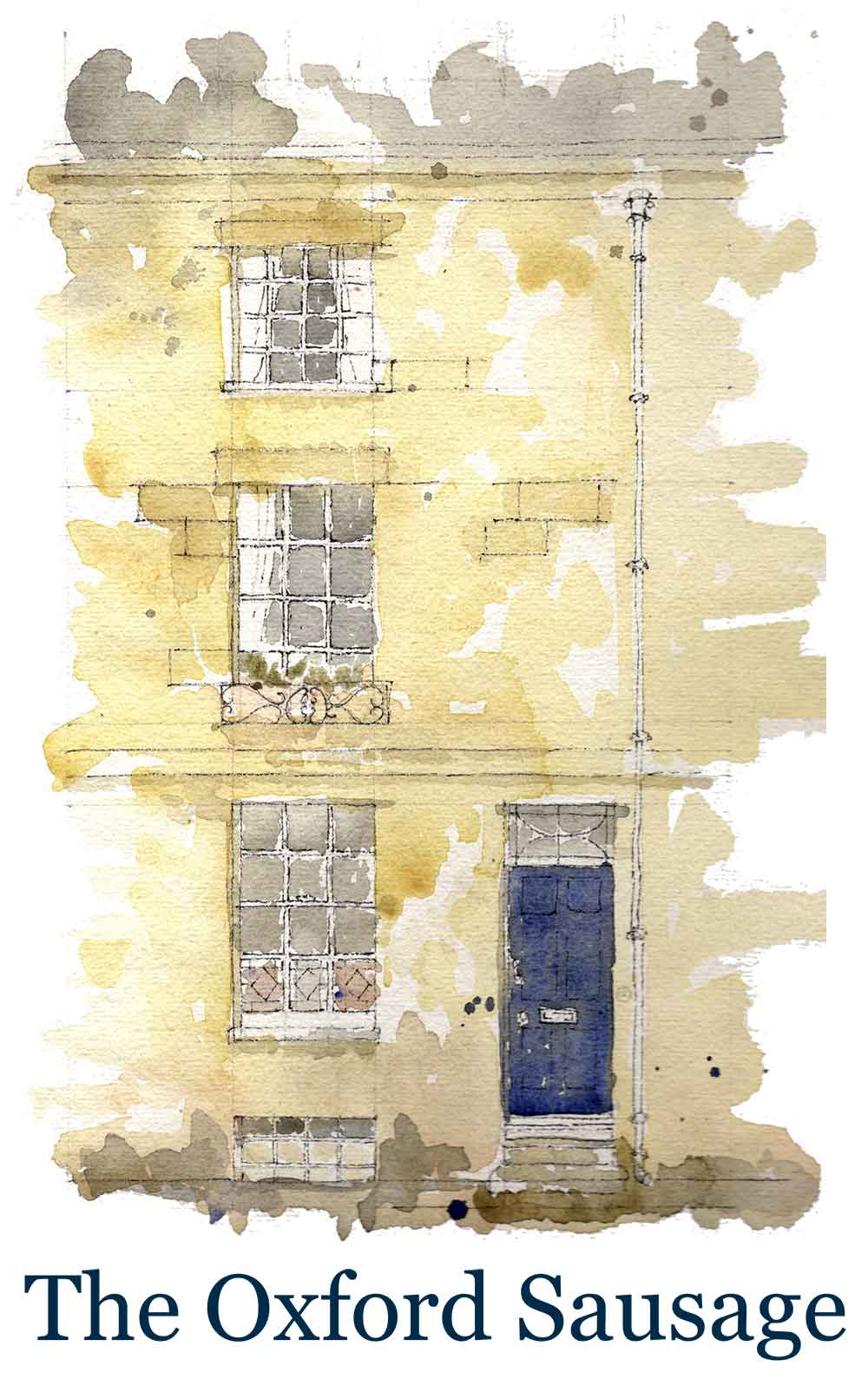When I was researching Oxford tokens for a previous ‘Sausage’ post, I came across a coin that had been struck in the mid 17th century with the sign of a tennis racket. It was issued by one Thomas Wood, a city tradesman who made a good living running several of the many courts in Oxford – so great was the demand back then there were at least 14 in the colleges alone and another five for public use. But this wasn’t the game associated with local stars like Tim Henman (well, local-ish, he lives in Aston Tirrold). This was ‘real tennis’, played with a net that sags in the middle, on a funky inside court to a complicated but intriguing set of rules more akin to a game of ‘quidditch’ than that played on the lawns of Wimbledon. And although today I am heading to the one surviving court in the city, it seems the game is still alive and kicking.
Walking down Merton Street, the brown cobbles shiny in the rain, this area just south of the High Street, does in truth feel like it’s from another age. Passing the old medieval stables of Merton College, I turn into a small courtyard behind Postmaster’s Hall a pretty, gabled, stone house built for poor scholars, made famous as the birthplace of Oxford antiquary, Anthony Wood and where he also lived until he died. There was already a thriving racket court here then, built in 1595 and later leased by his father Thomas as a business (confusingly no relation to the token maker above) with adjoining living quarters. The current building is a later incarnation from 1798, but still the second oldest ‘real tennis’ court active in England today after Hampton Court Palace, and it makes the record books as the country’s smallest.
This is the home to The Oxford University Tennis Club, a bit of a misnomer as although many of its members are students, you don’t have to be at the University to use it, or indeed be of student age (many are over 50 and called ‘seniors’). Plus it’s not really the tennis we might associate with the word that is being played here. But then that’s all part of the charm. Jim Ludekens is one of the two club professionals who run it, and a more friendly enthusiast for the sport it would be hard to find. But then ‘real tennis’ runs in the blood. His father, Kees, originally from Australia where he learned the game, was an Oxford club pro before him, (a photograph of Kees as coach hangs on the walls.) His parents met at the Merton Street Club, before moving to Cambridge, to take up the equivalent post there. Jim grew up in the house that came with the job. It had a connecting door that led directly on to the ‘real tennis’ court. ‘It was pretty cool,’ says Jim.
Jim does very much the same job as the court keepers of old. He still handmakes the balls from cork, (at one time human hair was used) bound tightly with cotton tape and string, a felt cover stretched and sewn over the top. These make for heavier, more solid balls than the rubber equivalent used in lawn tennis, with little give or bounce. The rackets are different too, smaller and tightly strung by hand, a service he also offers. ‘A good player can go through their strings every couple of weeks,’ says Jim, showing me a stack of the strange-shaped rackets waiting for his attention.
A steady stream of players, both young and old, men and women, pass through the clubroom while we are talking, eager to get their game of this most ancient of sports. Thought to have originated in France, where it was called ‘le jeu de palme’, and played with your hand, then a glove, then a short stick (the reason Jim thinks for the asymmetrical shape of what by the 15th century had become the real tennis racket) over a makeshift net against walls in medieval cloisters, and marketplaces. There are tennis balls on display in The Oxford Museum found in the rafters of college dining halls. And this is the feel that has been recreated on court. Enclosed on all four sides and bedecked with pictures of crowns and feathers, along three walls sloping roofs have been erected (the penthouses), with netting underneath to form a gallery and behind which spectators can watch. There’s also a buttress intruding on to the court at one end (a tambour) against which shots can be played. Though the rules are too complicated to explain here, what’s exciting is that there are various hidden targets around the court, which if hit can score you points. Like the square window enclosing a unicorn, (the grille) an emblem special to Oxford, and used in recognition of the eponymous pub that stood next to what was once a real tennis court on Blue Boar Street – at Hampton Court it’s a painting of Henry VIIIth. Hit the net of the winning gallery and a bell rings, or the netting at the end of the service end (the dedans) and this also scores you a point. It’s a bit like being on a speed awareness course where you are in charge a car and being asked to avoid the hazards that keep popping up around you, only here you are positively encouraged to hit them.
And then there are ‘the chases’ a series of lines on the floor that are used tactically to win or lose a serve. ‘It’s like chess,’ explains Jim. ‘There are a hundred different openings, and a hundred different approaches you can take. It’s thrilling. It’s what I love about the game.’ And what in its heyday, when ox blood was sprinkled on the floors to add grip, attracted gamblers from all walks of life. People would queue around the block to lay their bets.
In the country of its birth, where there were once 1,000 courts (Francis 1 was so keen he even built one on a battleship) the Revolution put pay to a sport associated with the aristocracy. There remain only three in use in France today. Here, we don’t seem to have minded too much that this was a game played by kings, Henry VIIIth loved it, as did Prince Rupert. Charles 1st during the English Civil War was even given parliamentary permission to allow a new tennis suit to be brought into Oxford through enemy ranks. Though some court buildings limped on as theatres, and many by the late 1800’s had been converted into billiard rooms, lecture halls, art galleries, even hen houses, in England the sport has held on. With interest on the up, we remain the largest supporters of real tennis in the world.
And Merton Street Court in Oxford is certainly doing its bit. There is a friendliness and passion about the people I met, the older enthusiasts eager to point out that real tennis is a sport where, since tactics count as much as fitness and there is a handicap system, you can play well into retirement. After all, the Australian, Rob Fahey, and world champion for a whacking 26 years, hung up his racket only recently when he was in his mid 50’s. ‘You don’t have to be good at the game to enjoy it,’ says Jim, adding that he offers free taster sessions to those who live in the city, apart from students who are already well subsidised. It all sounds very appealing. I might even give it a go myself. I fancy a shot at that unicorn.
Tennis and Oxford by Jeremy Potter published by Oxford Unicorn Press, tells the story of Oxford’s links with tennis in great details. All proceeds from the book go to The Merton Street Club.
Photography by John Milnes
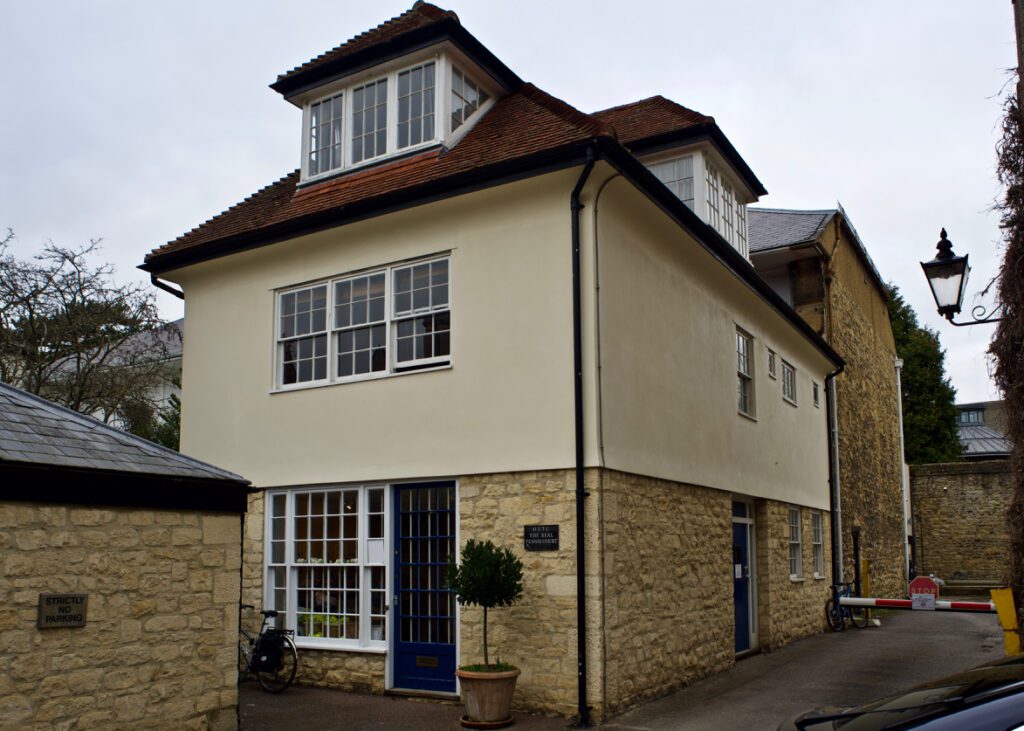
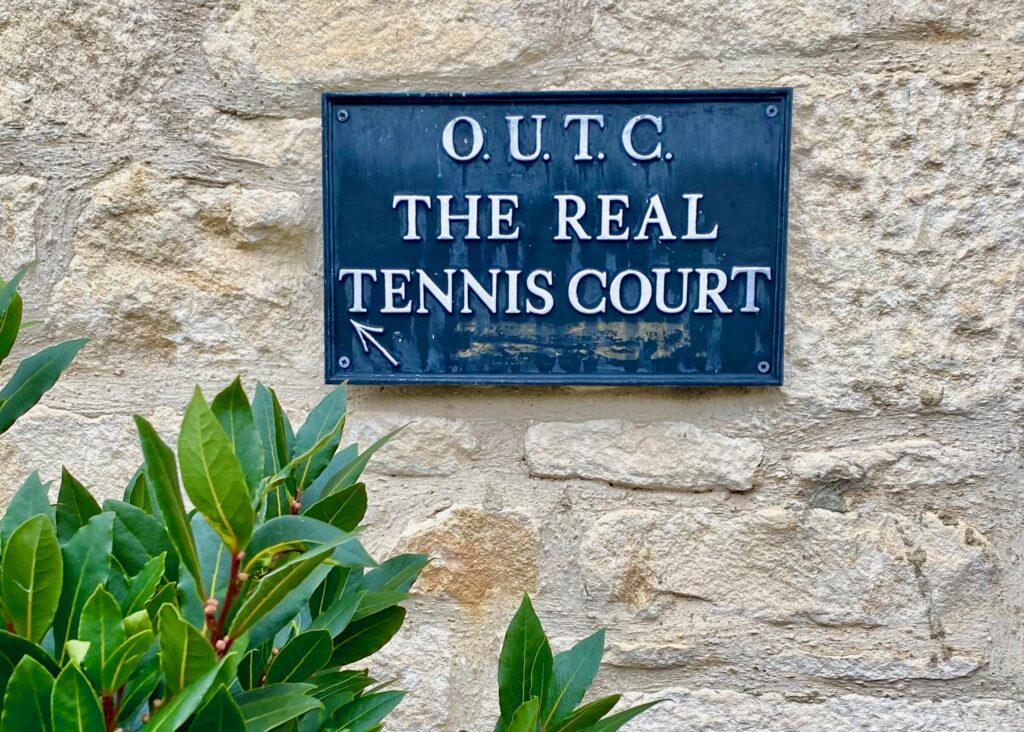
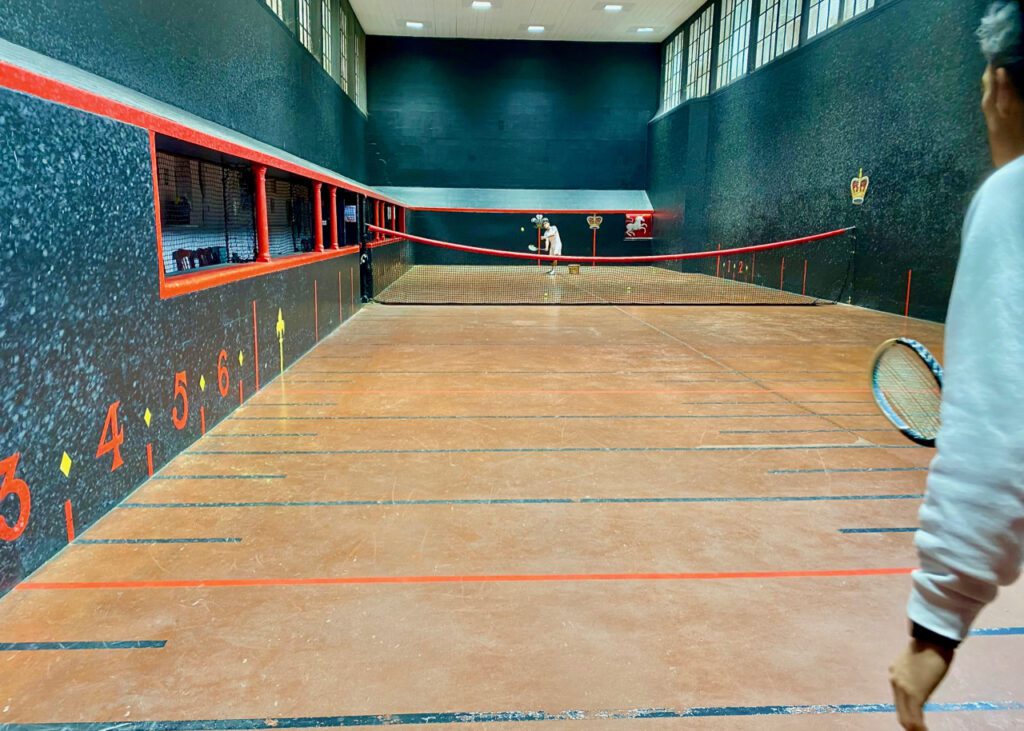
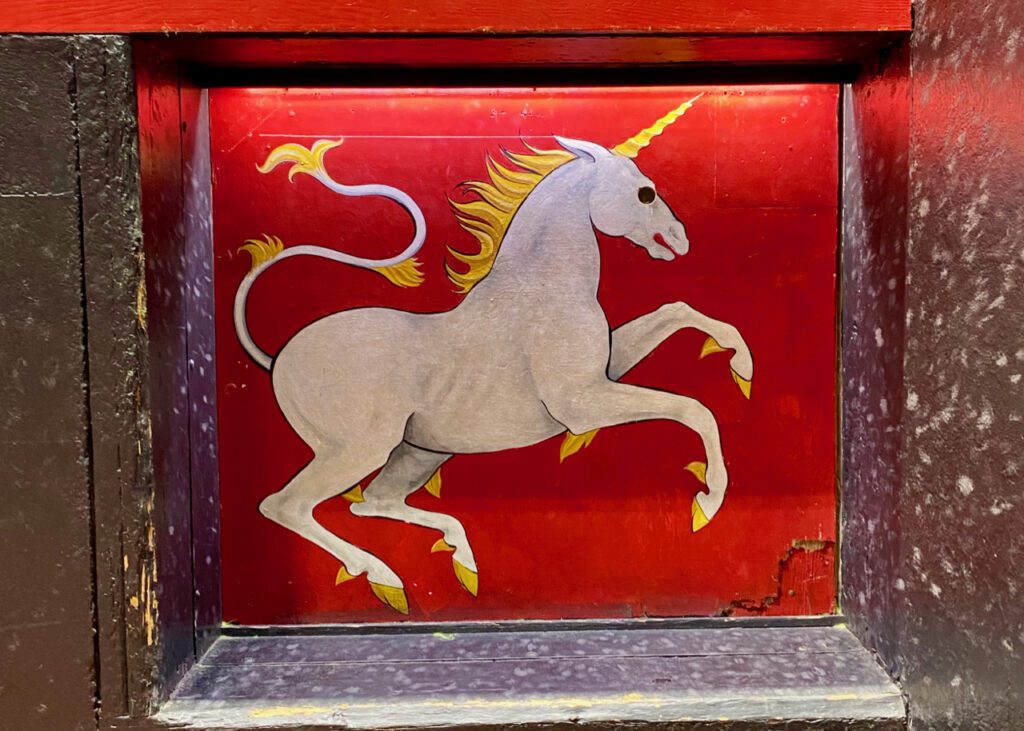
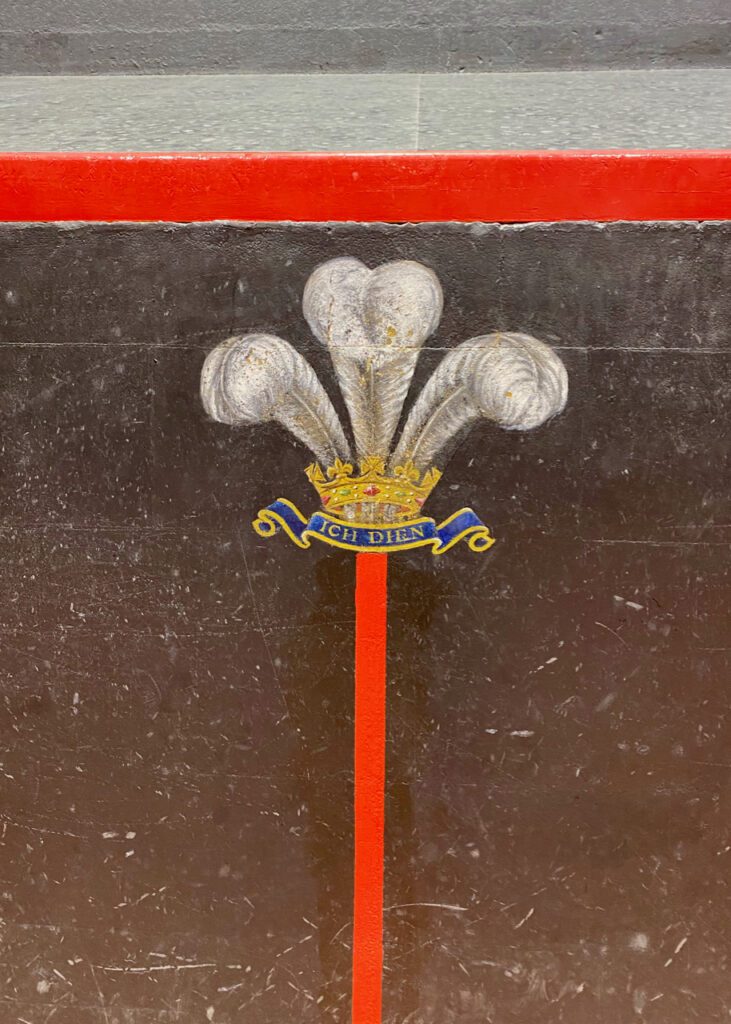
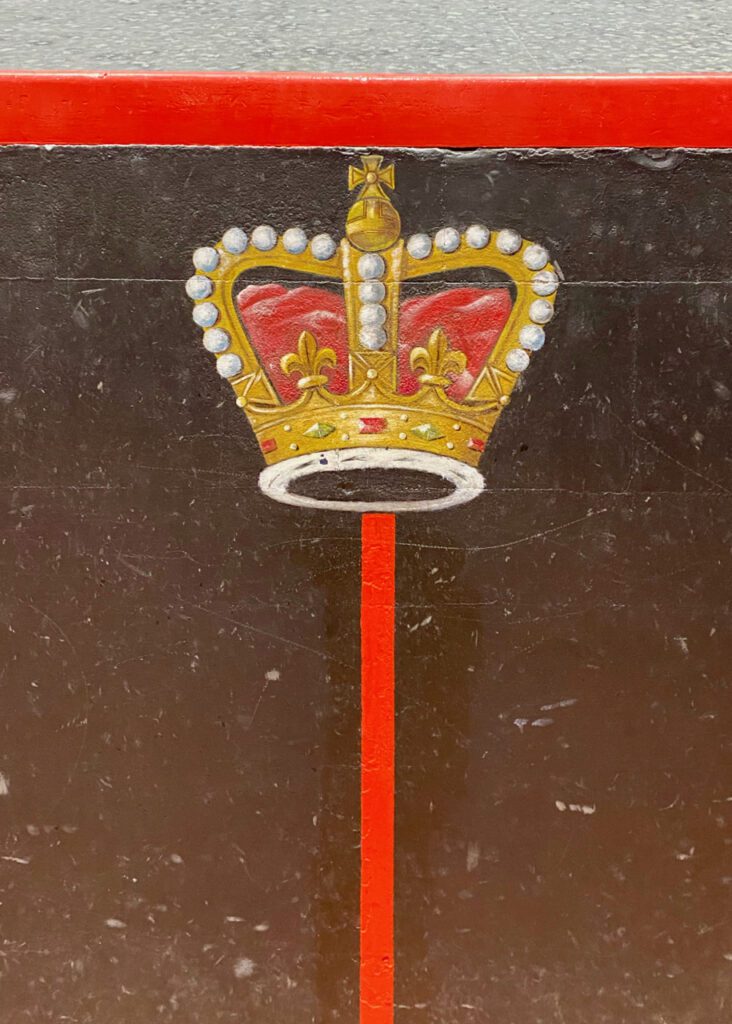
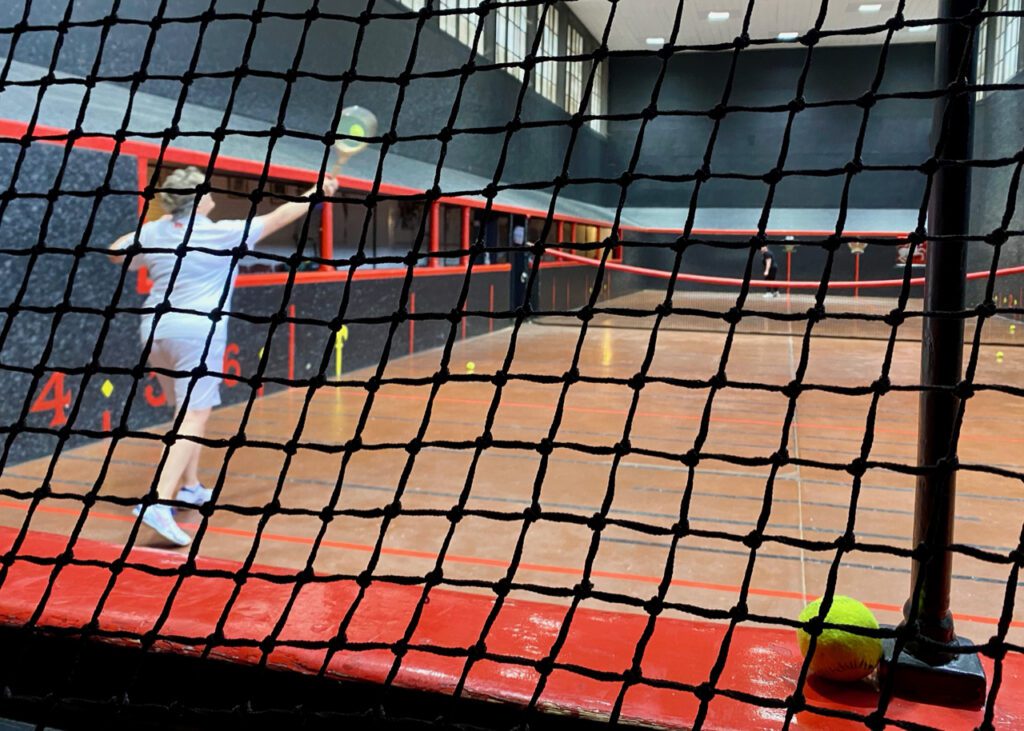
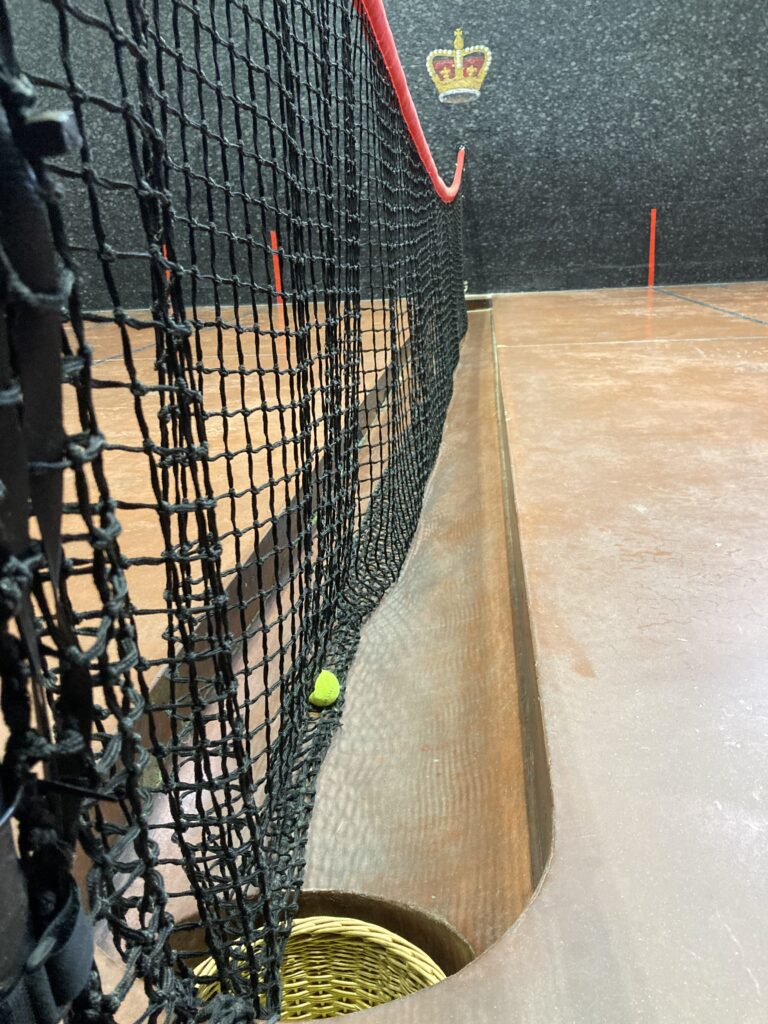
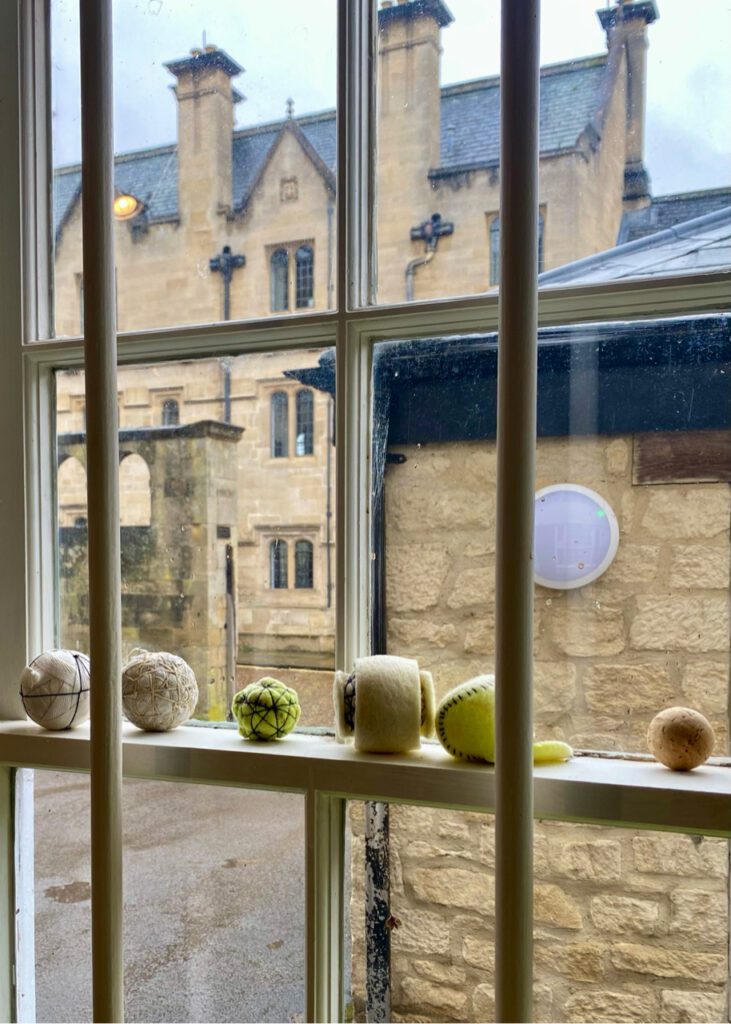
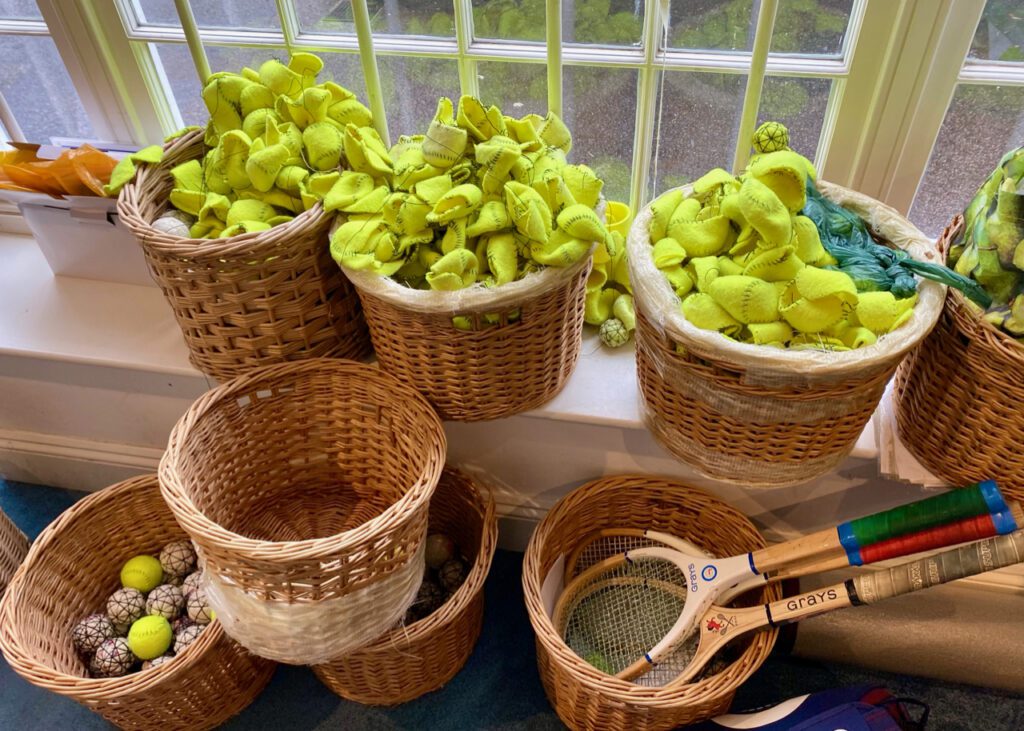
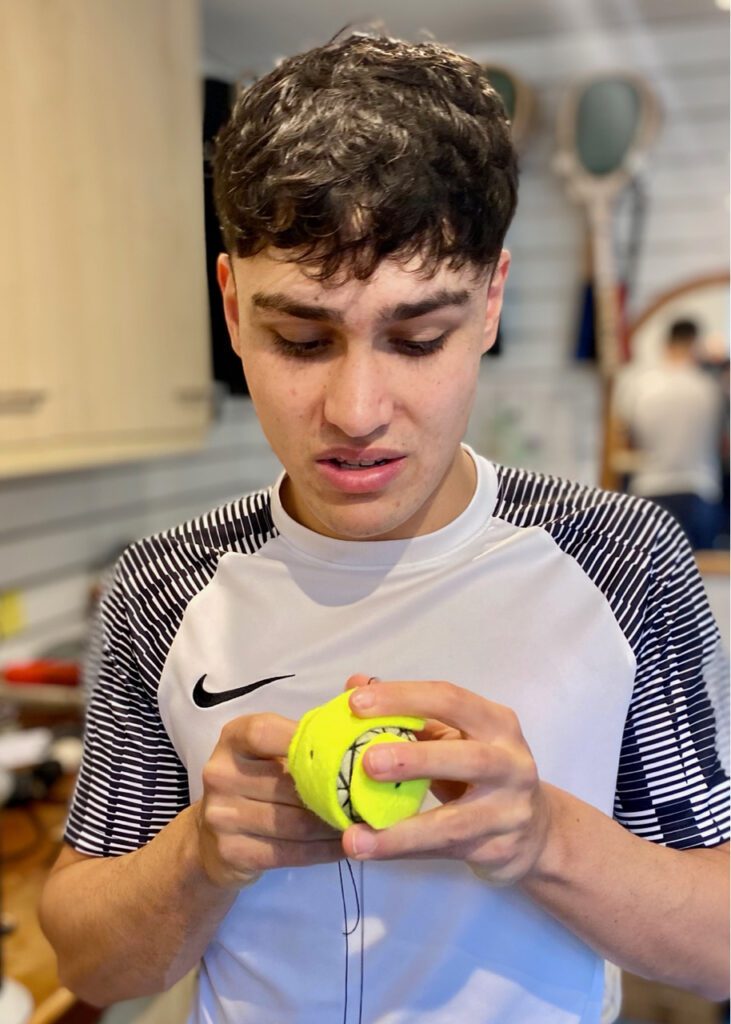
Jim Ludekens makes all the balls by hand.
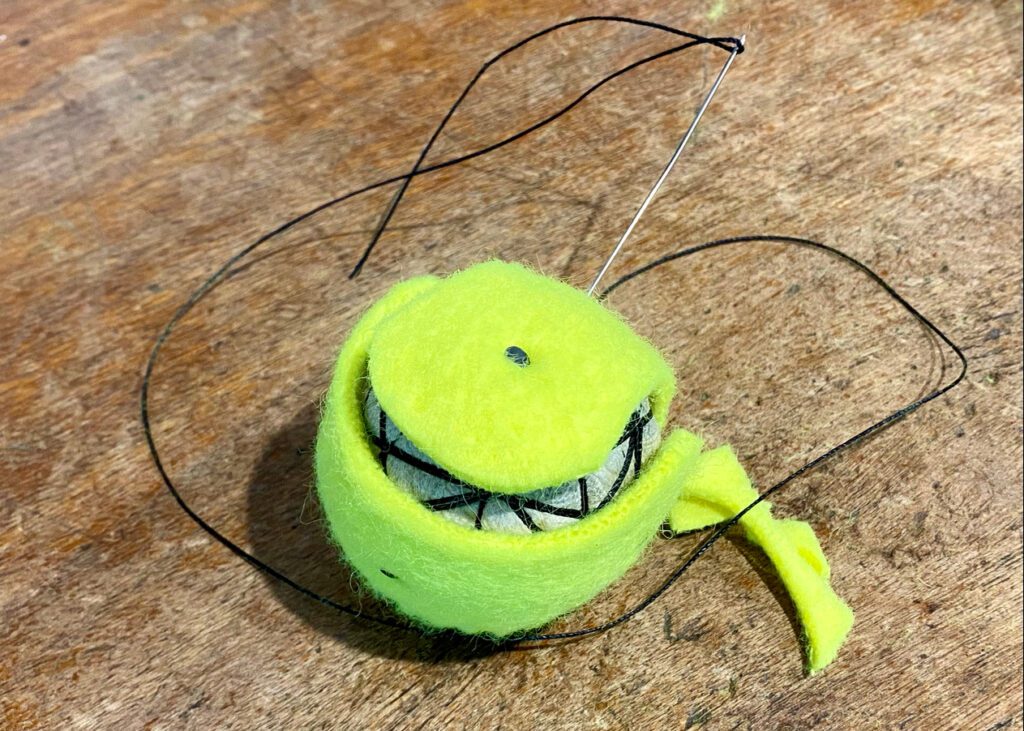
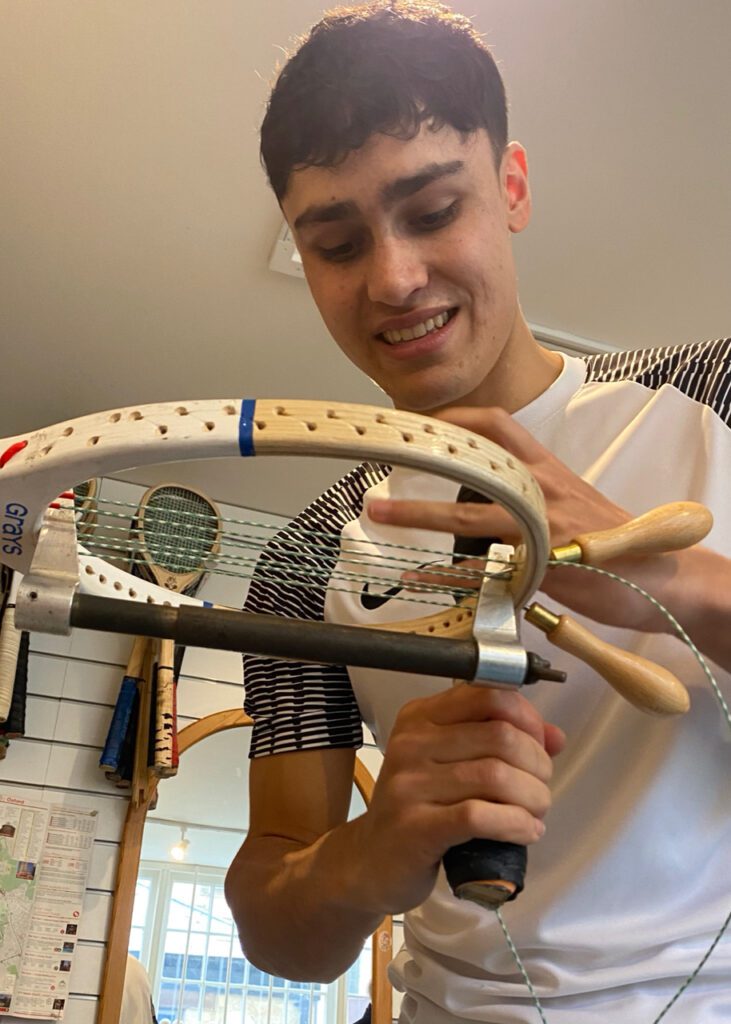
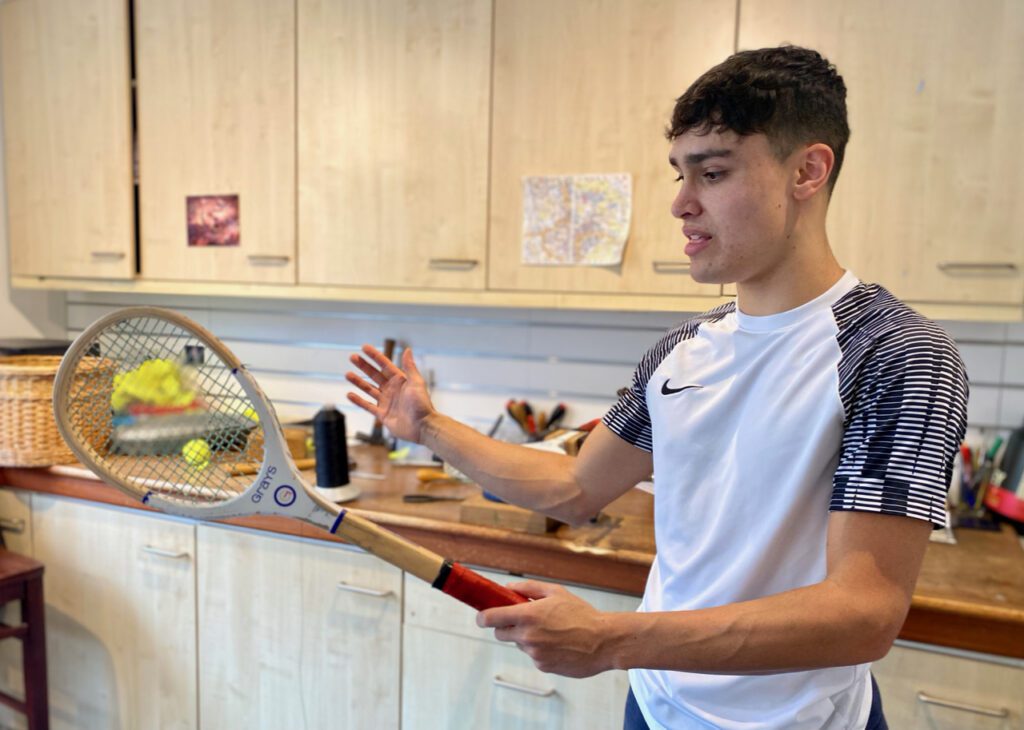
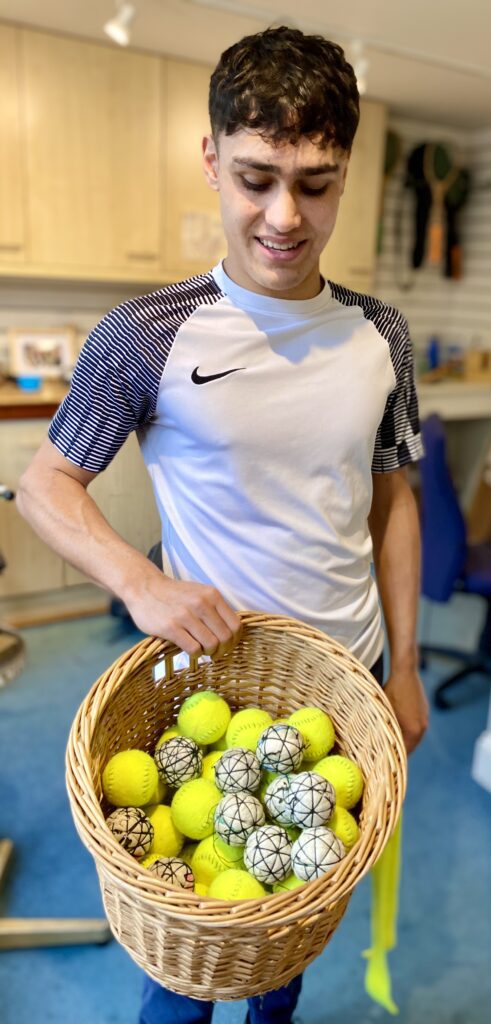
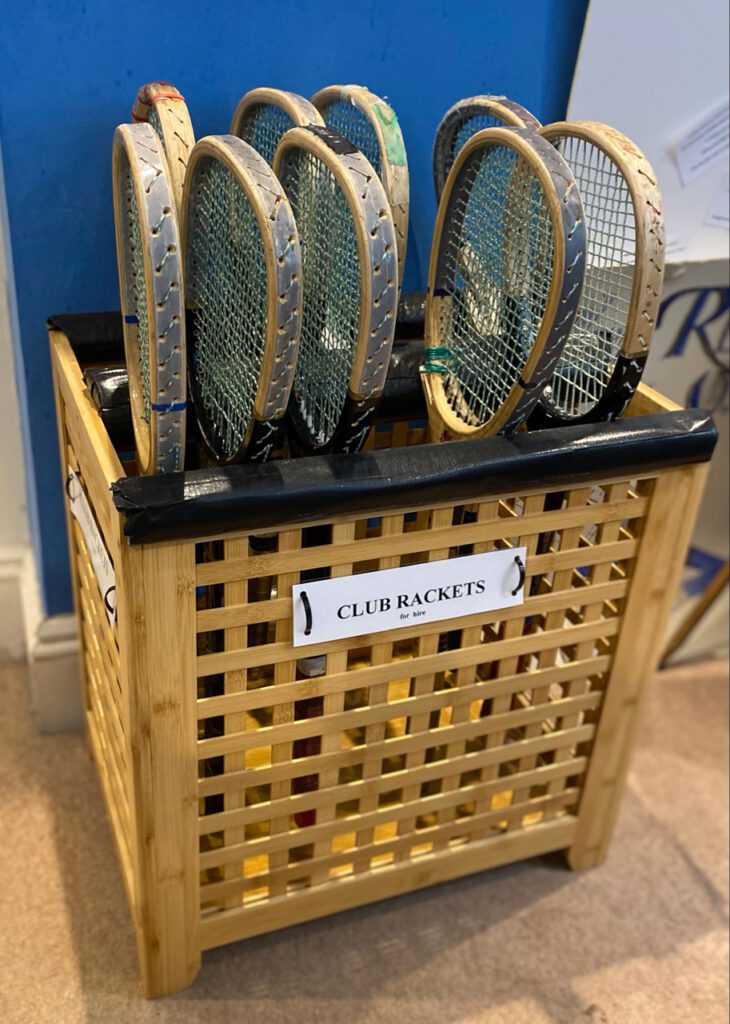

Early ball games, played around whatever features they could find.
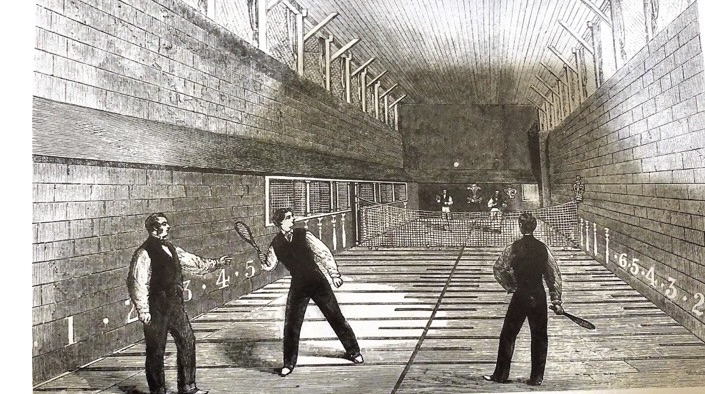
1859 – the future Edward V11 having a lesson on what was the then a court on Oriel Street, later turned into a theatre, now a college lecture hall.
